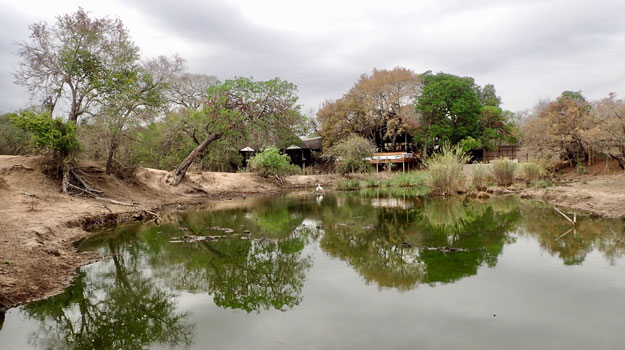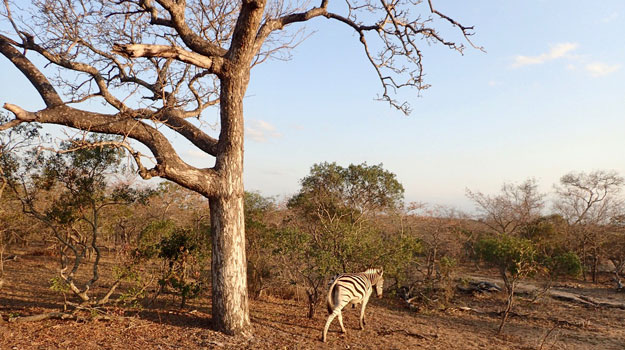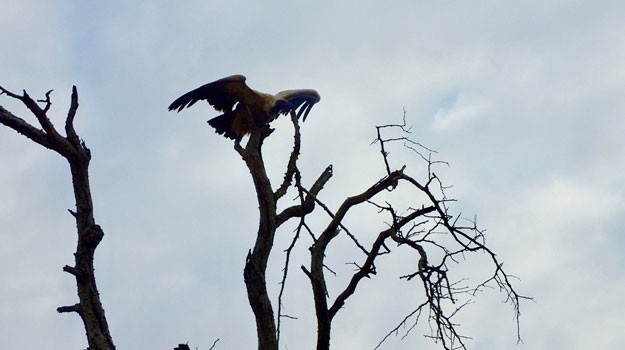Until you've been seen by a wild animal you haven't really been seen.
Forearms outstretched over the gym’s water fountain - the way an antsy antelope does at a waterhole - I assess the predators in my tribe, those chiselled and buff men at the gym who preen and pose and remind me of my diminished stature. The lore of the bush isn’t so removed from the lore of the gym. What the bold and beefy at the gym don’t know is that despite my flabby underarms and saggy tummy skin, I’ve been tracking two of the most dangerous Big 5 on foot.
Before you think I’m telling fibs, it was under the careful guidance of Royal Malewane's professional field guide, Nik Vounnou, and tracker, Patrick Moyeni, both armed with many years’ experience in the bush, a rifle and a back-up sidearm for dangerous game.
JP and I walk in single file behind Nik and Patrick and climb to the top of a termite mound. There is a large herd of buffalo, just a few meters ahead and a white rhino and her calf.
Qualifications in the bush matter
I worry that the beasts will hear the agitated beating of my heart, made worse by my stifled breathing. This is a first for me. I’ve never been as close to buffalo on foot before. Nik is quietly explaining that from our elevated position we are safe in the event that the buffalo notices us and wants to explore us, rather than the other way around. As the 2012 winner of the FGASA Safari Guide of The Year competition, a holder of a National Diploma in Nature Conservation and a FGASA Level III Professional Field Guide with National and SKS-Birding, we knew we were in good hands even when one of the daggaboys - the name given to the older (and often fiercely tempered) buffalo that cake their horns in mud to protect themselves from the flies and biting ticks - spied us as we left our termite mound to continue our journey.
Until you’ve been seen by a wild animal you haven’t really been seen. There is almost a spiritual quality about it: the very antithesis of the social persona we so readily share on Facebook and others. Being seen by an animal is really being seen.
Don’t sniff at the lessons dung can teach us
We find a civet latrine. A number of animals mark their spatial prowess by spraying urine while others return to the same place to defecate. Nik holds up a handful of civet droppings and pushes aside thin, white, bony bands. “That was a shongololo - a type of millipede that ended life as a civet snack. You can see the calcified exoskeleton,” he points out.
At another site we look deep into a rhino turd. “The black colour is an indication of the oxidised tannins in grass, so that belongs to the grass-eating White Rhino.” In a lighter coloured stool he pulls apart the compacted leaves to reveal twigs and their 45 degree bite mark. “The Black Rhino has jaws at 45 degree angles and finding these angled pieces is a clear indication where they came from.”
October drought leaves carcasses
During our October 2016 visit the area in the Thornybush Private Game Reserve, near Kruger Park’s Orpen Gate, is so dry that about 15 buffalo have died from the lack of nutrition in the plants and grasses.
Scattered scatology
As a guest at a luxury lodge it is hard to see near starving animals: their once majestic frames reduced to skin stretched taut over ribs and spine. On our morning game drive we saw a recently dead zebra. When the anti-poaching rangers found it they cut open the belly to make it easier for vultures and other animals to penetrate the innards before they putrefied in the heat and poisoned the meat. We took a closer look.
While on our walk the day before we came near a buffalo corpse that had the stench of death about it, hanging heavy like too much cheap perfume. By contrast, even close-up, the zebra gave off no scent at all. Nik said it would be okay to feel its skin, if I wanted to. Not yet even cold to the touch, the zebra felt just like it was sleeping rather than dead. Because of the gasses produced by the bacteria that breakdown the cellulose in the herbivore’s diet, the colon dissented out of the animal like a snake creeping out. When Nik touches the bowel it sounds like the tapping on a drum. At another site he points out the scatterings of marble-sized dark-coloured pellets. “What produced these?” he asked us. Wanting to sound as sleuth-like as possible I suggested an antelope that was defecating on the run which might account for the spread-out nature of the droppings. “No,” he said, “These were from a giraffe and it was simply from the great height that they were dropped which produced the spray effect.”
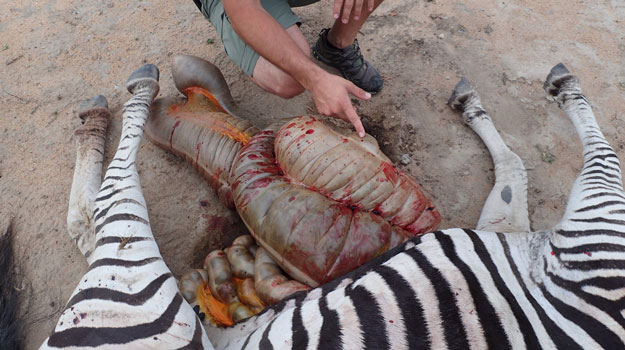
That night, at one of Royal Malewane’s bush dinners cooked under the stars, we talk about the elephants that have to keep eating as they absorb very little at a time and I ask about the damage the elephants cause by killing the trees from which they strip the cambium bark. “There is no emotion or malice in nature,” he remarked, “Yes, the tree dies but something else lives because of it. The poorly digested elephant dung provides nutrition for beetles and insects. Returning to the zebra cadaver some hours later it appears as if meticulous pathologists have been at work. Not only is there little trace of the innards but all the soft meat has already been eaten away. As punishing as the drought is for some, other predators such as Royal Malewane’s seven lionesses we spy are fat and glossed as a result of the easy pickings.
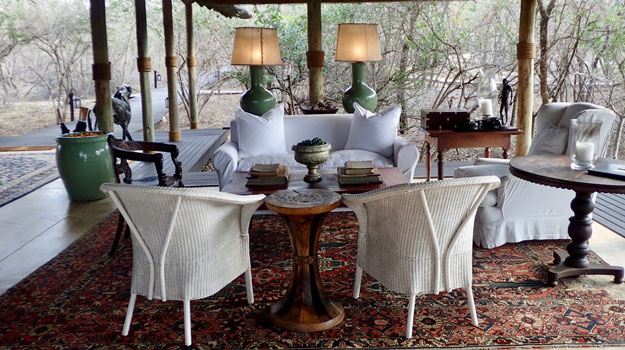
For some a visit to a luxury game lodge is about the pampering relaxation that comes with it. For me it is about the education I get from having private time and space to learn from arguably the best qualified field guides in the land. The privilege that comes from a stay at Royal Malewane (part of The Royal Portfolio) is not only the exquisite cuisine and bespoke luxury but the opportunity to see and be seen eye to eye with the beasts of the wild. That’s what comes from being at the top of the food chain, for now.
For more info or to make a booking go to www.theroyalportfolio.com






































